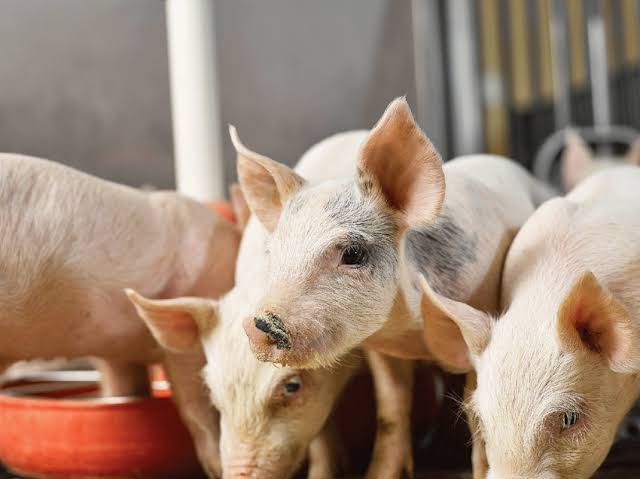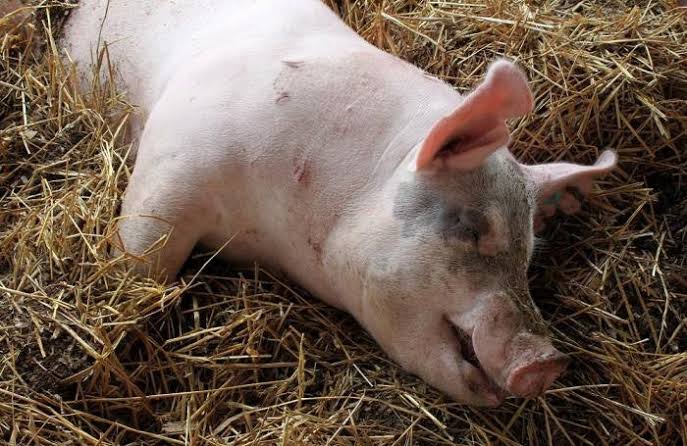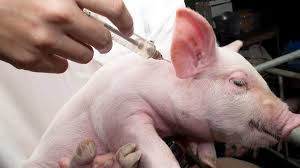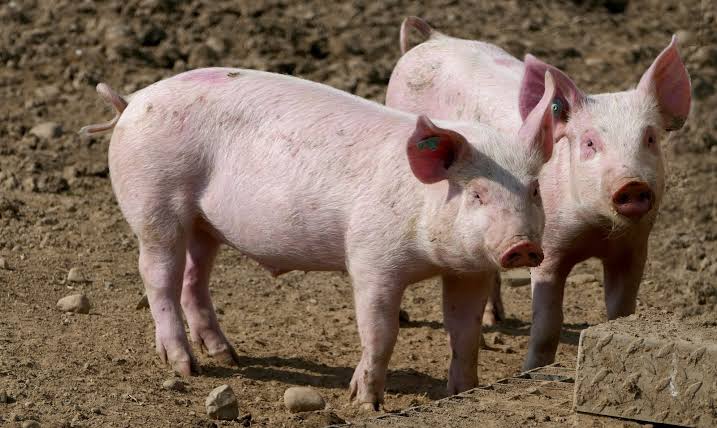Porcine Reproductive and Respiratory Syndrome (PRRS), scientifically known as PRRS virus (PRRSV), is a significant concern in the swine industry. This virus affects pigs, causing reproductive issues and respiratory problems. It is important to understand the impact of PRRS on pig populations and the efforts made to manage and control its spread.
PRRS primarily affects pigs of different ages, with symptoms ranging from mild to severe. The virus can lead to reproductive failure in pregnant sows, including late-term abortions, stillbirths, and weak piglets. Additionally, infected pigs often experience respiratory distress, characterized by coughing and difficulty breathing. This combination of reproductive and respiratory effects makes PRRS a complex challenge for the swine industry.
The PRRS virus is highly contagious and can spread easily among pigs through direct contact, aerosols, or contaminated equipment. Infected pigs shed the virus, contributing to its rapid transmission within and between herds. The ability of PRRS to mutate further complicates control efforts, as different strains may emerge over time.
Controlling PRRS involves a multifaceted approach. Biosecurity measures play a crucial role in preventing the introduction of the virus into pig farms. This includes strict hygiene protocols, limiting contact between pigs and controlling the movement of people, vehicles, and equipment. Vaccination is another key tool in managing PRRS. Vaccinated pigs may still become infected, but the severity of symptoms is often reduced, and the overall impact on the herd is mitigated.
Research continues to explore new strategies for PRRS control, including improved diagnostic methods, antiviral medications, and better understanding the virus’s genetic diversity. The economic impact of PRRS on the swine industry is substantial, as affected herds experience reduced productivity, increased mortality, and the cost of implementing control measures.
Read Also: 15 Unique Facts about Goats
Animals Affected by Porcine Reproductive and Respiratory Syndrome

Porcine Reproductive and Respiratory Syndrome (PRRS) primarily affects domestic pigs, both in breeding and growing herds. The virus has a notable impact on various stages of pig development, affecting animals of different ages in distinct ways.
1. Sows (Adult Female Pigs): PRRS significantly affects pregnant sows, leading to reproductive problems such as late-term abortions, stillbirths, and the birth of weak piglets. Infected sows may also experience a decrease in fertility, resulting in reduced litter sizes.
2. Piglets: Newborn piglets from PRRS-infected sows may be born weak and more susceptible to other infections. The virus can contribute to increased mortality rates among piglets and compromise their overall health and growth.
3. Weaners (Pigs Recently Separated from the Mother): PRRS can impact weaned piglets, leading to respiratory distress, coughing, and increased vulnerability to secondary infections. The compromised respiratory health of weaners can hinder their growth and development.
4. Growing Pigs: PRRS continues to affect growing pigs, impacting their respiratory system and overall health. Infected pigs may exhibit reduced weight gain, increased susceptibility to other diseases, and a higher mortality rate.
5. Boars (Adult Male Pigs): While the impact on boars may not be as pronounced as in sows, PRRS can still affect their reproductive performance, leading to decreased fertility and potential transmission of the virus through semen.
It’s essential to note that the severity of PRRS symptoms can vary, and some pigs may show only mild signs or be asymptomatic carriers, contributing to the challenge of controlling the spread of the virus within and between herds. Managing PRRS involves implementing biosecurity measures and vaccination strategies to reduce the impact on different categories of pigs and ensure the overall health and productivity of swine populations.
Damages Caused by Porcine Reproductive and Respiratory Syndrome

Porcine Reproductive and Respiratory Syndrome (PRRS) inflicts various damages on pig populations, impacting both individual animals and the swine industry as a whole. The consequences of PRRS are multifaceted, affecting pig health, reproductive performance, and economic aspects. Here are some of the damages caused by PRRS:
1. Reproductive Failure: PRRS significantly disrupts the reproductive cycle of infected sows. This leads to late-term abortions, stillbirths, and the birth of weak piglets. Reduced fertility in sows can result in smaller litters, affecting the overall productivity of breeding herds.
2. Respiratory Distress: PRRS induces respiratory problems in infected pigs, including coughing and difficulty breathing. The compromised respiratory health can lead to decreased weight gain, poor feed conversion, and an increased susceptibility to secondary bacterial infections.
3. Increased Mortality: PRRS can elevate mortality rates in affected pig populations, particularly among piglets and weaners. The weakened immune systems of infected pigs make them more susceptible to other diseases, contributing to higher death rates.
4. Reduced Growth Rates: Infected pigs, especially growing pigs and weaners, may experience stunted growth and reduced weight gain. This not only affects the overall size and quality of the pigs but also results in economic losses for pig producers due to decreased efficiency in feed conversion.
5. Economic Impact on Swine Industry: The economic consequences of PRRS are substantial. Pig producers face losses due to reduced productivity, increased mortality, and the cost of implementing biosecurity measures and vaccination programs to control the spread of the virus.
6. Trade Restrictions: PRRS outbreaks can lead to trade restrictions on pig and pork product exports. Affected regions may face limitations in selling pigs or pork internationally, impacting the economic viability of the swine industry in those areas.
7. Increased Veterinary and Treatment Costs: Managing PRRS requires veterinary intervention and treatment strategies. The cost of medications, diagnostic tests, and veterinary services adds to the financial burden on pig producers.
8. Impact on Boar Studs: PRRS can affect boars, leading to decreased fertility and potential transmission of the virus through semen. This impacts boar studs, which play a crucial role in artificial insemination programs.
Porcine Reproductive and Respiratory Syndrome causes a range of damages within pig populations, affecting their reproductive health, respiratory function, and overall economic value. Effective management and control measures are essential to mitigate these damages and maintain the health and productivity of the swine industry.
Read Also: How to Prepare a Cow for Calving
Control and Preventive Measures

Controlling and preventing Porcine Reproductive and Respiratory Syndrome (PRRS) is crucial for maintaining the health and productivity of pig populations. Effective strategies involve a combination of biosecurity measures, vaccination, and management practices. Here are key control and preventive measures for PRRS:
1. Biosecurity:
Quarantine and Segregation: Isolate and quarantine new pigs entering the farm to prevent the introduction of the virus. Segregate pigs based on age groups to limit the spread of the virus between different stages of production.
Restricted Access: Control and limit access to the farm premises. Implement strict hygiene protocols for visitors, staff, and vehicles to minimize the risk of introducing PRRS.
2. Vaccination:
Vaccination Programs: Utilize PRRS vaccines as part of a comprehensive herd health program. Vaccination can help reduce the severity of symptoms, limit the spread of the virus, and minimize reproductive and respiratory issues.
Timely Vaccination: Administer vaccines at appropriate times, considering the age and reproductive status of the pigs. Follow recommended vaccination schedules to ensure optimal protection.
3. Herd Monitoring and Diagnostics:
Regular Testing: Implement routine diagnostic testing to identify PRRS infections early. Regular monitoring helps in identifying and isolating infected individuals or groups to prevent further transmission.
Serological Testing: Conduct serological testing to detect the presence of antibodies and assess the immune status of the herd.
4. Cleaning and Disinfection:
Thorough Cleaning: Maintain a rigorous cleaning and disinfection routine for facilities, equipment, and transport vehicles. PRRS can persist in the environment, so proper sanitation is essential for preventing re-infection.
Effective Disinfectants: Use disinfectants proven to be effective against PRRS. Follow recommended concentrations and contact times to ensure proper disinfection.
5. Herd Management:
All-In, All-Out Management: Adopt an all-in, all-out system, where groups of pigs are introduced and removed as a whole. This helps break the cycle of infection and minimizes the risk of PRRS transmission.
Stocking Density: Avoid overcrowding, as high stocking density can increase stress and facilitate virus transmission. Adequate space and ventilation are important for maintaining respiratory health.
6. Genetic Selection:
Select for Resistance: Consider genetic selection for PRRS resistance when choosing breeding stock. Some breeding programs focus on developing pigs with increased resistance to PRRS, which can contribute to herd health.
7. Education and Training:
Staff Training: Provide education and training to farm personnel on PRRS awareness, biosecurity protocols, and proper animal handling practices. Well-informed staff are crucial for implementing effective control measures.
8. Collaboration:
Industry Cooperation: Collaborate with neighboring farms, veterinarians, and industry stakeholders to share information and implement coordinated strategies for PRRS control. Regional cooperation can be valuable in managing the spread of the virus.
In summary, a comprehensive approach that combines biosecurity, vaccination, monitoring, and management practices is essential for controlling and preventing Porcine Reproductive and Respiratory Syndrome. Regular evaluation and adaptation of control measures based on the evolving nature of the virus are key components of successful PRRS management.
Frequently Asked Questions (FAQs) About Porcine Reproductive and Respiratory Syndrome
Q1: What is Porcine Reproductive and Respiratory Syndrome (PRRS)?
A1: PRRS, scientifically known as PRRS virus (PRRSV), is a viral infection affecting pigs. It is characterized by reproductive issues in pregnant sows and respiratory problems in pigs of various ages.
Q2: How is PRRS transmitted?
A2: PRRS is primarily transmitted through direct contact between pigs, aerosols, or contaminated equipment. Infected pigs shed the virus, contributing to its rapid spread within and between herds.
Q3: What are the symptoms of PRRS in pigs?
A3: Symptoms include late-term abortions, stillbirths, weak piglets, respiratory distress, coughing, and difficulty breathing. However, some pigs may show only mild signs or be asymptomatic carriers.
Q4: How can PRRS be diagnosed?
A4: Diagnosis involves serological testing to detect antibodies and polymerase chain reaction (PCR) assays to identify the virus’s genetic material. Regular monitoring helps in early detection.
Q5: Can PRRS be prevented through vaccination?
A5: Vaccination is a key preventive measure. While it may not eliminate the virus, it can reduce the severity of symptoms, limit transmission, and contribute to overall herd health.
Q6: What biosecurity measures are important in preventing PRRS?
A6: Key biosecurity measures include quarantine and segregation of new pigs, restricted access to the farm, and thorough cleaning and disinfection routines for facilities, equipment, and vehicles.
Q7: How does PRRS impact the reproductive health of sows?
A7: PRRS causes reproductive failure in sows, leading to late-term abortions, stillbirths, and the birth of weak piglets. Infected sows may also experience reduced fertility.
Q8: Can humans contract PRRS from pigs?
A8: No, PRRS is specific to pigs and does not pose a direct threat to human health. However, humans can act as carriers and may inadvertently contribute to its spread.
Q9: What is the economic impact of PRRS on the swine industry?
A9: PRRS results in economic losses due to reduced productivity, increased mortality, the cost of implementing control measures, and trade restrictions on pig and pork product exports.
Q10: Are there ongoing research efforts to manage PRRS?
A10: Yes, research continues to explore new strategies, including improved diagnostics, antiviral medications, and understanding the genetic diversity of the virus, to enhance PRRS management.
Read Also: How to Grow Tomatoes in Containers

